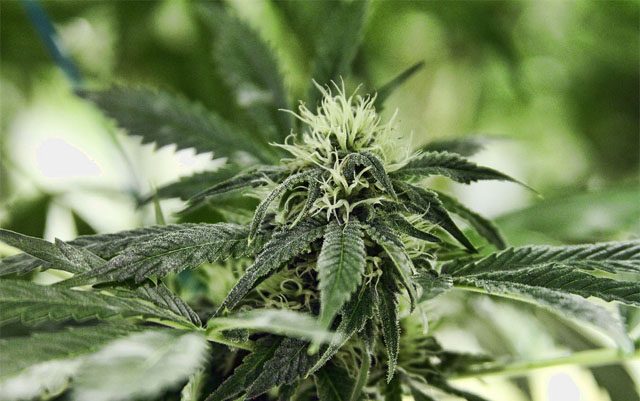Zinc deficiency is addressed by all the usual ganja guru suspects whose cannabis cultivation advice I respect and have learned from in books, magazine articles, live lectures and internet postings. Their observed symptoms of interveinal chlorosis, edge and spot necrosis plus stunted new growth seem to me more the result of near or complete absence of zinc rather than a mere “deficiency”. After reviewing the literature, I’ve come to believe that zinc deficiency in cannabis is a very common yet silent suppressor of optimum yields. In food agriculture, crop yields can be attenuated by over 20% without any symptoms at all of zinc deficiency being visible; this can go on for years and you’d never know it. As with any chlorosis inducing condition, your first step in diagnosis and treatment is to check the pH of your cannabis growing media. If the pH is too high, even if sufficient zinc is present in the soil or nutrient liquids, it could be rendered unavailable to the roots due to the physics of ion action, this is known as “nutrient lock-up”.
Zinc is a key component of several essential enzymes, proteins and hormones, including Auxin which regulates leaf formation and growth. Zinc is second only to iron as an essential micronutrient yet unlike iron, vast swaths of the Earth’s agricultural regions (30% !!!) lack sufficient zinc for optimum vegetative growth. Alarmingly, these lands are intensely farmed for cereal crops which contributes to nutritional zinc deficiencies, a serious human health issue for up to one third of the world’s population. Zinc has anti-viral effects, studies have shown that having zinc ions in your saliva can reduce the length of cold and flu illness in half, this has led to the success of zinc gluconate lozenges as a homeopathic remedy.
Studies on tomatoes (my favorite proxy compensating for the lack of University research on cannabis) indicate that mycorrhizal inoculation can help your crop utilize what little zinc is actually present. Here in California I’ve found published studies as far back as 1960 describing widespread zinc deficiencies in our soils resulting in simultaneously subtle yet severe consequences of reduced yield. Thanks to the application of zinc fertilizers over the years, most California agricultural soils now have an adequate amount for crops which generally uptake around half a pound of zinc per acre in a growing season. Most sun grown cannabis, however, is cultivated far away from agricultural lands. Outdoors, five pounds per acre of zinc sulfate annually plus a generous inoculation with mycorrhizal fungi ought to keep your cannabis at peak performance. For indoor hydroponic cannabis grows, be certain your nutrient mixtures contain enough zinc to maintain a concentration of 0.33ppm, the recommended nutrient dosage for tomatoes.
Any advice and opinions about the cultivation of cannabis offered by Bruce N. Goren are his own and do not represent the University of California or the Master Gardener Program.






